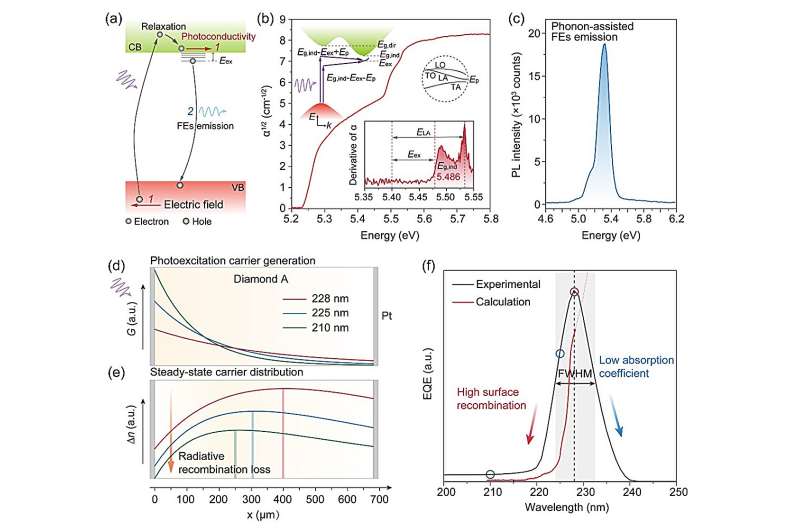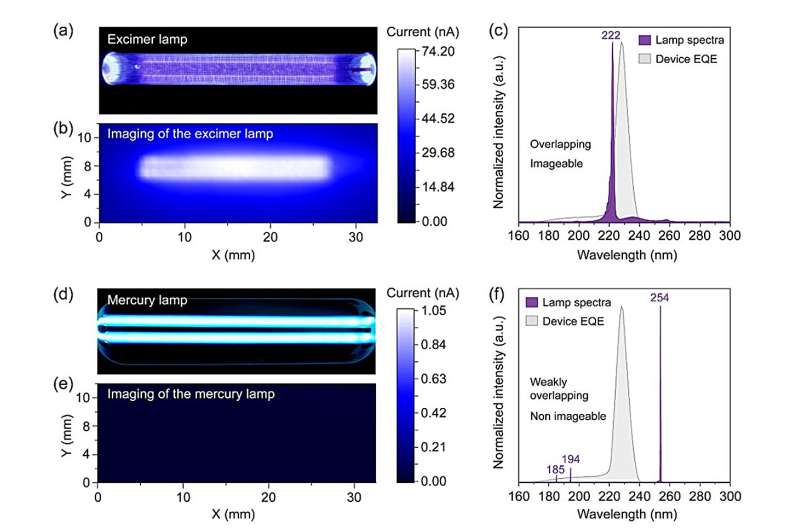GEMOLOGY
Ancient diamonds shine light on the evolution of Earth

The analysis of ancient, superdeep diamonds dug up from mines in Brazil and Western Africa, has exposed new processes of how continents evolved and moved during the early evolution of complex life on Earth.
These diamonds that were formed between 650 and 450 million years ago on the base of the supercontinent Gondwana, were analyzed by an international team of experts, and have shown how supercontinents such as Gondwana were formed, stabilized, and how they move around the planet.
"Superdeep diamonds are extremely rare and we now know that they can tell us a lot about the whole process of continent formation," says Dr. Karen Smit of the Wits School of Geosciences, who was part of the study. "We wanted to date these diamonds to try and understand how the earliest continents formed."
Formed millions to billions of years ago, diamonds can shine light into the darkest and oldest parts of the Earth's mantle. Continents drift across Earth's surface creating "supercontinents" and destroying them. Collectively, these migrations are known as the "supercontinent cycle" and diamonds are one of the few minerals strong enough to survive and record these ancient cycles of creation and destruction.
Supercontinents can focus deep oceanic plate subduction—the driver of plate tectonics—in very specific regions. Such deep geologic processes, especially in the past, have been very difficult to study directly because the oceanic crust is young, and the continental crust only provides a limited view of Earth's deep workings. Old diamonds offer a direct window into the deep plate tectonic engine and how it might relate to the supercontinent cycle.
By dating the tiny silicate and sulfide inclusions inside the diamonds, the team led by Dr. Suzette Timmerman of the University of Bern, Switzerland, dated the diamonds that formed 300 to 700km deep under the base of Gondwana. The goal was to trace how material was added to the keel of the supercontinent. While doing this, the team recognized a previously unknown geologic process. The research was published in Nature.
"The geochemical analyses and dating of inclusions in the diamonds, combined with existing plate tectonic models of continent migration, showed that diamonds formed at great depths beneath Gondwana when the supercontinent covered the South Pole, between 650–450 million years ago," says Smit.
The host rocks to the diamonds became buoyant during diamond formation, transporting subducted mantle material plus the diamonds. This material was added to the base of the root of Gondwana, in essence 'growing' the supercontinent from below.
"Around 120 million years ago, Gondwana started to break apart to form the present oceans such as the Atlantic. At 90 million years ago, the diamonds, carrying trapped tiny inclusions of the host rock, were brought to Earth's surface in violent volcanic eruptions."
The current locations for these volcanic eruptions are on the continental fragments of Brazil and Western Africa, two of the key components of Gondwana. Thus, the diamonds must have migrated together with different parts of the former supercontinent as it dispersed, "glued" to their base.
"This complex history of the diamonds shows that they are remarkably well-traveled, both vertically, and horizontally, within the Earth—tracing both the formation of the supercontinent and the latter stages of its evolution. The accretion of relatively young material to the roots of the continents thickens and welds together these ancient continental fragments indicating a potential new mode of continent growth."
Smit conducted the isotope analyses of sulfide inclusions at Carnegie Institution for Science. Smit is now based at the University of the Witwatersrand where she is part of a team developing a new isotope lab and methodologies so that diamond inclusion analyses can ultimately be conducted at Wits.
"We have installed the necessary equipment in 2022 and are working towards getting the highly specialized skills and equipment together so we can do this type of diamond work in South Africa, where previously it could only be done overseas," says Smit.
"We need this type of research to understand how continents evolve and move. Without continents there wouldn't be life. This research gives us insight into how continents form, and it links to how life evolved and what makes our planet, Earth, different from other planets."
More information: Suzette Timmerman, Sublithospheric diamond ages and the supercontinent cycle, Nature (2023). DOI: 10.1038/s41586-023-06662-9. www.nature.com/articles/s41586-023-06662-9
Journal information: Nature
Provided by Wits University Argyle volcano study reveals crucial third clue to finding new diamond deposits
High-quality diamonds empower narrowband deep ultraviolet photodetection

A new publication in Opto-Electronic Science reports how high-quality diamonds empower narrowband deep ultraviolet photodetection.
Compared to traditional broadband detectors, narrowband detectors have a more significant demand for applications in various industrial and cutting-edge scientific research fields due to their precise spectral resolution capabilities.
Typically, there are two methods to achieve narrowband detection at specific wavelengths. The first method involves combining a broadband photodetector with bandpass filters, which is a simple and effective approach but is limited by the availability of filters for certain wavelength bands.
The second method involves designing semiconductor structures to create intrinsic narrowband photodetectors without the need for filters. This approach reduces the complexity of the detection system compared to the first method and ensures good detection/imaging quality but places higher demands on the design of materials and devices.
Intrinsic narrowband photodetectors without filters are gaining popularity in various industrial and scientific research fields, with successful applications in the visible and infrared spectral ranges in recent years. However, there have been few reports on narrowband photodetectors in the deep ultraviolet (DUV) wavelength range, which is highly demanded in fields such as optical communications, environmental monitoring, photolithography, and space exploration.
Diamond, as an ultra-wide bandgap semiconductor, possesses exceptional physical and chemical properties, making it an ideal material for deep ultraviolet photodetection. While increasing sample thickness is a common method for narrowing charge collection in other materials, it is not suitable for diamond.
Most photodetectors based on thick single-crystal diamond exhibit broadband responses due to the high mobility of carriers in diamond and carrier trapping effects. Therefore, another critical parameter for tuning the spectral response is carrier lifetime, which is considered essential for achieving narrowband photodetection. Detailed analysis of the optical and electrical properties of diamond is crucial for achieving precise photomanipulation.
The three different single-crystal diamonds studied in the article are named Diamond A, Diamond B, and Diamond C, with their dislocation densities increasing sequentially. Interestingly, devices based on Diamond A, B, and C exhibit markedly different shapes in their external quantum efficiency (EQE) spectra, with full width at half maximum (FWHM) values of 8 nm, 31 nm, and 52 nm, respectively.
Devices based on Diamond A, characterized by its low dislocation density, display an extremely narrowband response with a peak centered at approximately 228 nm. These devices demonstrate exceptionally low dark current, high detectivity (1013 Jones), and a large linear dynamic range (LDR~118 dB).
Figure 1(a) illustrates the key physical processes that occur during the photodetection in Diamond A, including optical excitation, carrier relaxation, radiative recombination, and photoconductivity under an electric field. Figure 1(b) displays the absorption spectrum of Diamond A, confirming its low density of defect states. By analyzing the differential spectrum in the inset, the bandgap of Diamond A is calculated to be approximately 5.486 eV (with an exciton binding energy of ~80 meV).
Figure 1(c) presents the photoluminescence (PL) spectrum of Diamond A excited by a 193 nm pulse, wherein an exceptionally strong emission of free excitons is observed, indicating that exciton emission is the primary recombination process under optical excitation.

The fabricated narrowband detector can be used for imaging to distinguish different light sources. Figure 2(a) displays an optical photograph of a 222 nm excimer lamp. Figure 2(b) showcases clear imaging of the device with a light source (65×22 pixels). The emission spectrum of the excimer lamp and the EQE of the device are shown in Figure 2(c), with overlapping regions.
It has been proven that 222 nm irradiation is harmless to the human body, making it suitable for surface disinfection and radiation therapy. Research related to the low-pressure mercury lamp is presented in Figure 1(d-e), including optical photographs and corresponding imaging pictures.
The spectral lines of this low-pressure mercury lamp mainly consist of 185 nm, 194 nm, and 254 nm (Figure 2[f]), with the first two generating ozone in the air, posing a health hazard, and the last one causing irreversible damage to human skin and eyes. It is commonly used for indoor germicidal disinfection. Due to only a slight overlap between these spectral lines and EQE, the mercury lamp cannot be imaged. These results indicate that the fabricated narrowband detector can effectively distinguish between the two ultraviolet light sources.
In summary, the reported Diamond A-based photodetector boasts the shortest detection wavelength and the narrowest EQE peak to date. Its potential applications have been demonstrated through preliminary imaging. In the future, the practical performance of this detector can be further improved by fabricating array devices and optimizing the device structure. On the other hand, Diamond A's narrowband response sets it apart from other diamonds, indicating that spectral response testing of diamonds is a feasible method for discerning their quality.
More information: Lemin Jia et al, 8-nm narrowband photodetection in diamonds, Opto-Electronic Science (2023). DOI: 10.29026/oes.2023.230010
Provided by Compuscript Ltd
No comments:
Post a Comment